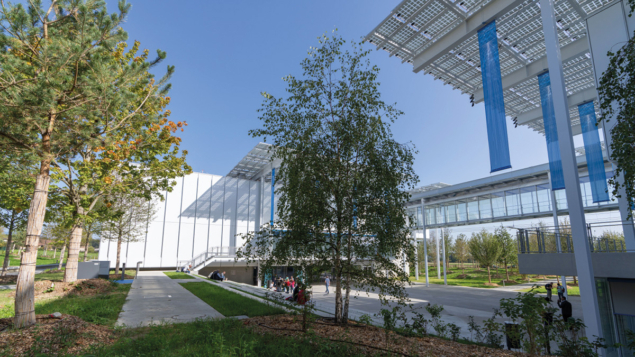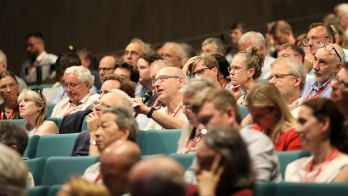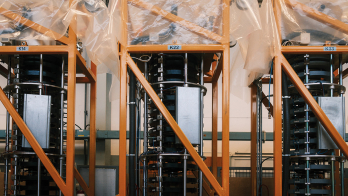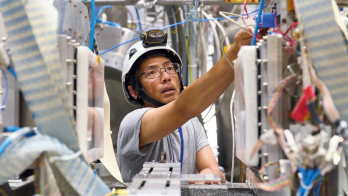
CERN’s third environment report, published on 4 December, chronicles progress made in various high-priority environmental domains during the years 2021 and 2022, and reflects a proactive approach to environmental protection across the laboratory.
CERN’s strategy with respect to the environment is based on three pillars: minimise the lab’s impact on the environment, reduce energy consumption and increase energy reuse, and develop technologies that can help society to preserve the planet. For a large part of the latest reporting period, CERN’s accelerator complex was undergoing a long shutdown that ended in July 2022 with the start of Run 3 (scheduled to end in 2025). The report charts progress made in domains such as waste, noise, ionising radiation and biodiversity, land use and landscape change. It specifically covers measures taken to reach objectives set out in the first report published in 2020: limiting the rise in electricity and water consumption and reducing direct emissions (“Scope 1”) of fluorinated gases from large experiments.
CERN is committed to limiting the rise in electricity consumption to 5% up to the end of Run 3 compared to the 2018 baseline year (which corresponds to a maximum target of 1314 GWh), while delivering significantly increased performance of its facilities. It is also committed to increasing energy reuse. A total of 1215 GWh was consumed in 2022, and the accelerator complex is now more efficient, delivering more data per unit of energy consumed (CERN Courier May/June 2022 p55). In light of the energy crisis, CERN implemented additional energy-saving measures as a mark of social responsibility, and further explored diversification of energy sources and heat-recovery projects. The process to obtain the internationally recognised ISO 50001 energy-management certification was also undertaken in the reporting period, and has since been awarded.
CERN’s objective is to reduce direct greenhouse-gas emissions by 28% by the end of Run 3 compared to 2018, which corresponds to a maximum target of 138,300 tCO2e. In 2022, 184,300 tCO2e direct emissions were generated, with a comprehensive programme to ensure progress towards the objective. For example, the experiments have increased efforts to repair leaks in gas systems and worked towards replacing current gases with more environmentally friendly ones. With respect to indirect greenhouse-gas emissions (“Scope 3”), CERN first reported these in the second environment report (2019–2020) spanning catering, commuting and duty travel. This third report now includes scope 3 emissions arising from procurement, which represent 92% of this total, and details the main sources of related emissions.
Regarding water consumption, CERN is committed to keeping the increase in its water consumption below 5% up to the end of Run 3 compared to 2018 (which corresponds to a maximum target of 3651 ML) despite a growing demand for water cooling at the upgraded facilities. Since 2000, CERN has radically decreased its water consumption by about 80%. The report also explores how waste is managed. CERN’s aim over the reporting period has been to increase its recycling rate for non-hazardous waste, which represents over 70% of the total waste generated. In 2022 this recycling rate was 69% compared to 56% in 2018.
Biodiversity, land use and landscape change are another important focus of the report, as is the latest on how CERN’s technology and knowledge benefit society, notably with the new CERN Innovation Programme on Environmental Applications launched in March 2022.
Benoît Delille, head of the CERN Occupational Health and Safety and Environmental Protection unit, concludes: “Over the years since we embarked on our first environment report, we have learned a great deal about our footprint, implemented mechanisms to better understand and control it, and increased our efforts to identify and develop technologies stemming from our core research that have the potential to benefit the environment.”








